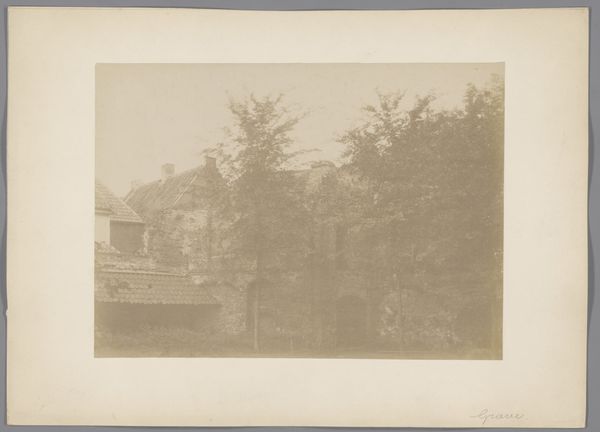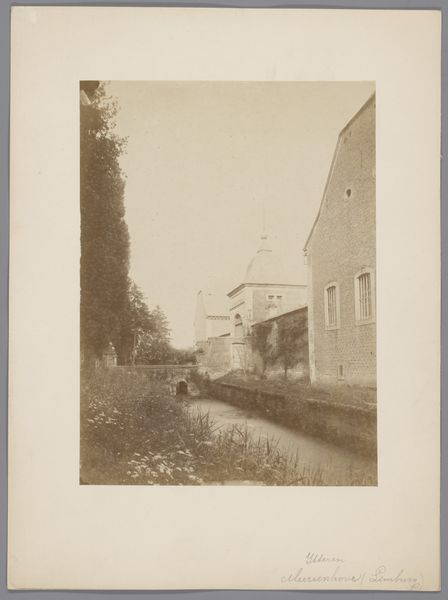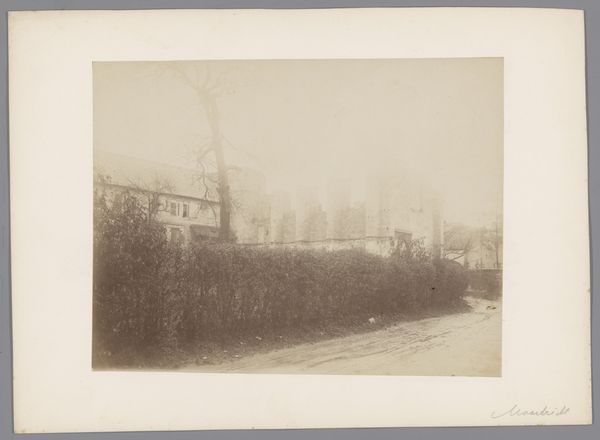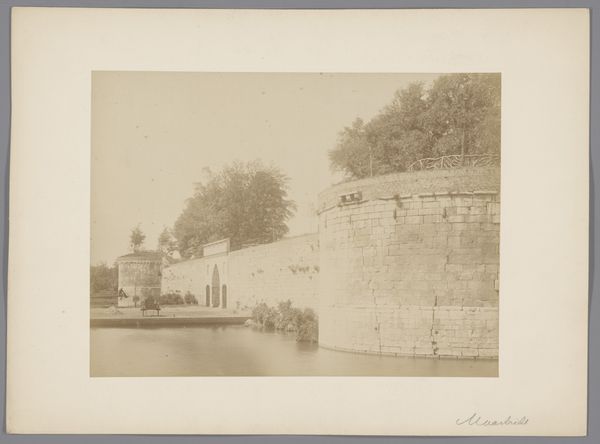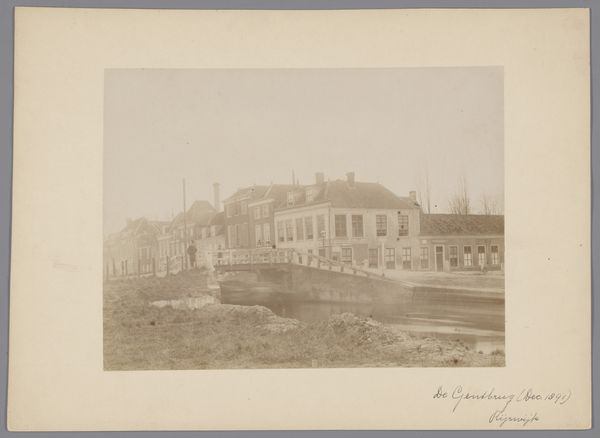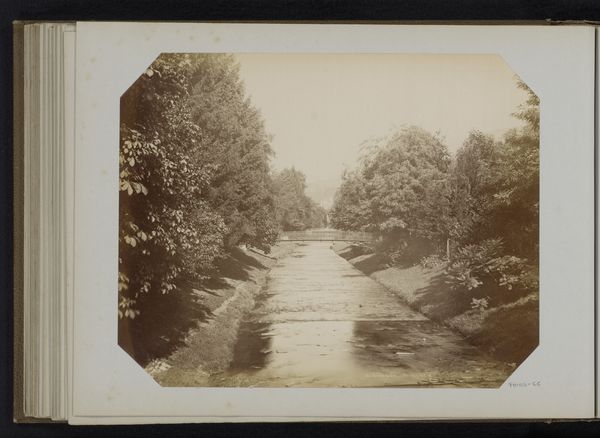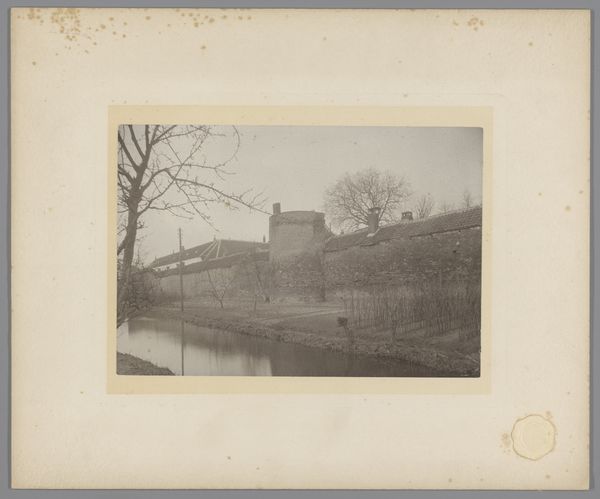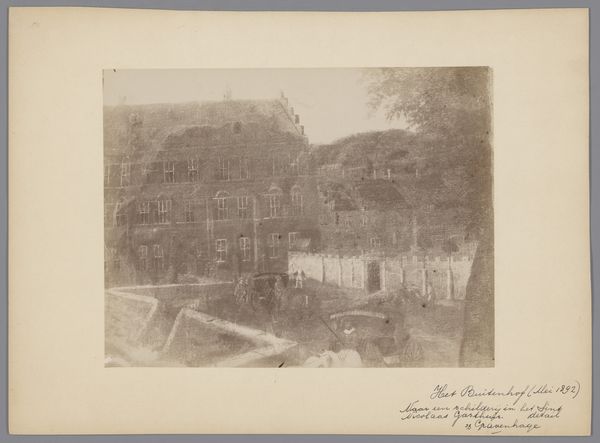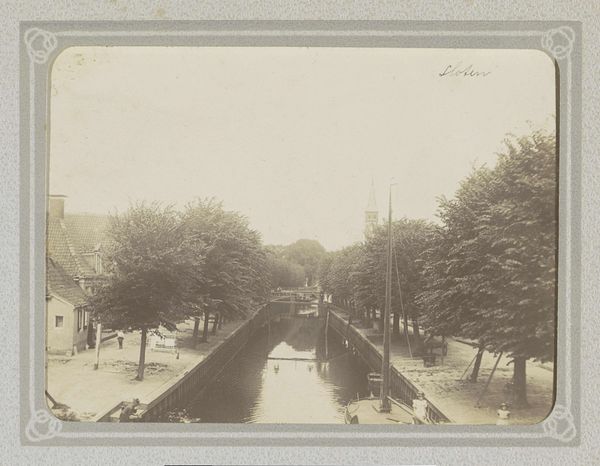
Dimensions: height 170 mm, width 242 mm
Copyright: Rijks Museum: Open Domain
Editor: We’re looking at "Brug een slotgracht van Kasteel Borgharen," a photograph taken in 1893 by Raphaël baron de Selys-Longchamps, created using an albumen print. It gives me a feeling of stillness; the water is so calm, reflecting the architecture. What draws your attention in this piece? Curator: I find the play of light and shadow particularly compelling. Notice how the photographer has meticulously captured the tonal variations, creating depth and texture within a monochromatic palette. The formal elements, such as the strong horizontal lines of the canal and the verticality of the castle tower, create a balanced, almost classical composition. Do you observe any geometric structures that subtly shape the arrangement of elements? Editor: Yes, the circular arches of the bridge contrasted against the angular walls. It creates a kind of dialogue, doesn't it? Curator: Precisely. The relationships between these forms invite contemplation of structure itself, a demonstration of how these basic formal choices create meaning. It moves beyond a mere record of a place. What function does it ultimately have, as an image? Editor: I suppose the careful composition elevates it from a simple snapshot to something more considered and artful. The light, the shapes...they all contribute to a sense of order. Curator: Indeed. This work is less about what is depicted, than how it is depicted. Consider how we find pleasure in analyzing these formal arrangements of line, shape, and tone – it really opens the piece to discussion. Editor: I see now, the architecture and landscape almost act as formal devices, pushing the work beyond simple documentation. It makes me consider the interplay of form and representation in other works too. Curator: Agreed. Examining its formal elements offers insight into the image's overall construction and lasting impact.
Comments
No comments
Be the first to comment and join the conversation on the ultimate creative platform.
